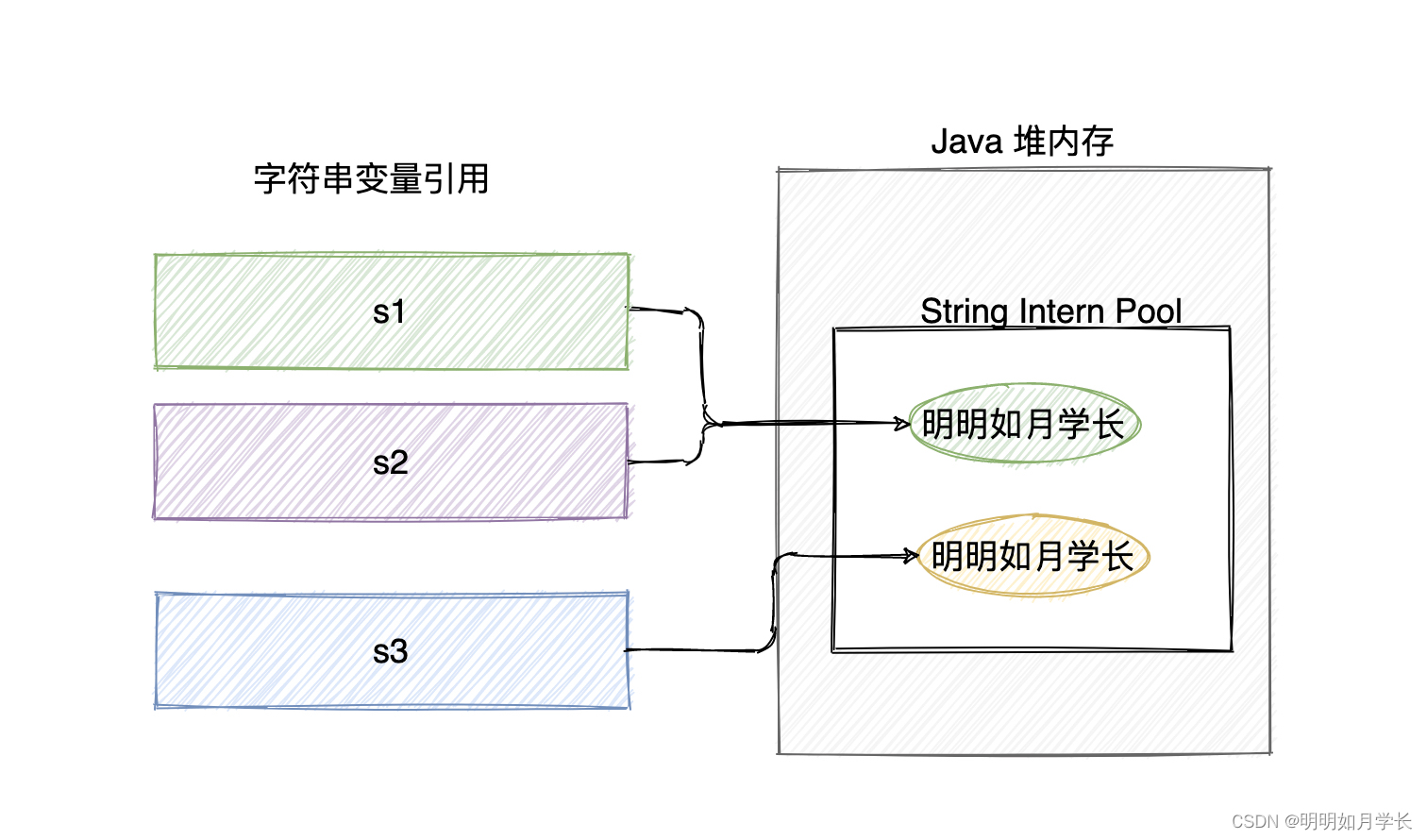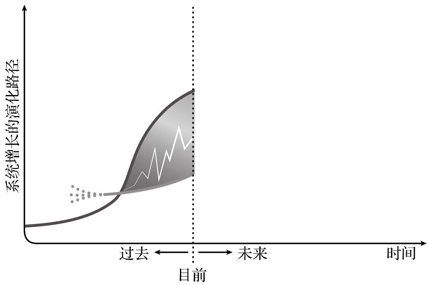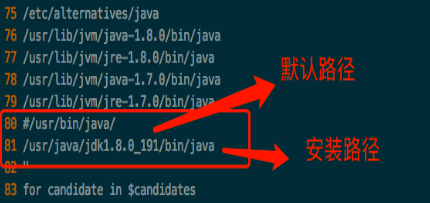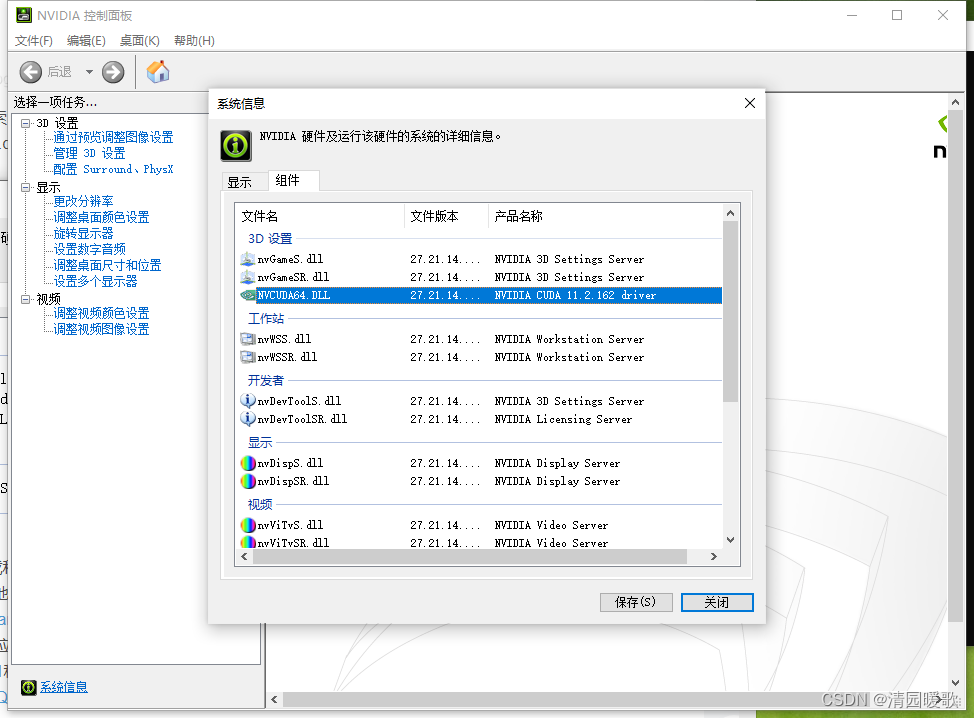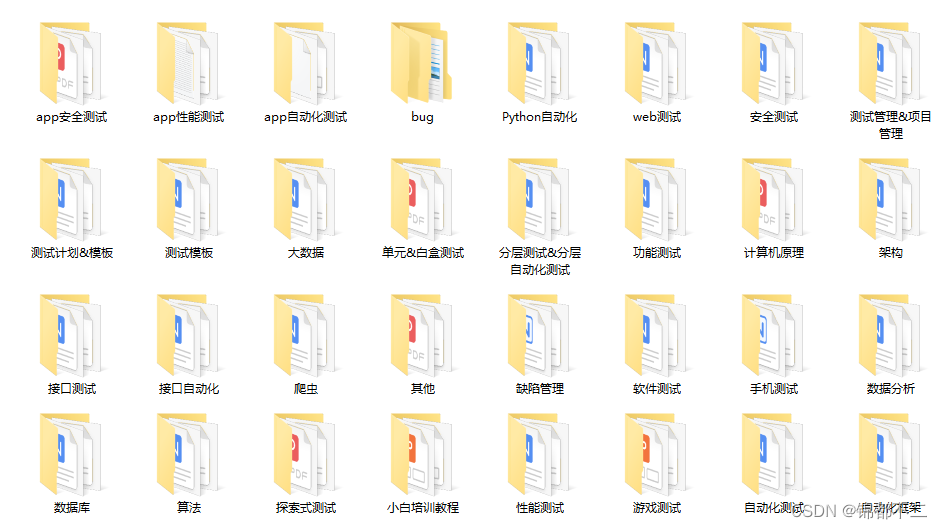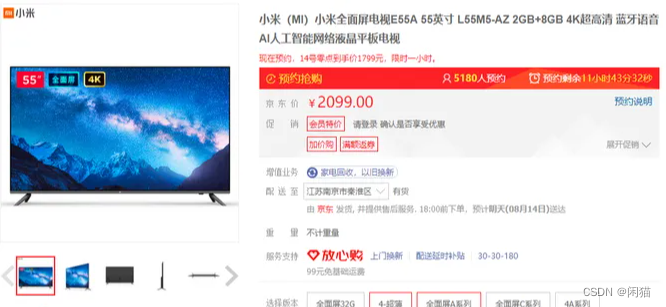当前位置:网站首页>Towards Real-Time Multi-Object Tracking (JDE)
Towards Real-Time Multi-Object Tracking (JDE)
2022-08-04 04:47:00 【Big Ben 47】
In this paper, we move on to multi-target tracking(MOT)Learn from common models and algorithms in the field,这次的主角是JDE,JDENot the name of a model,而是A general term for a class of tracking algorithms,全称叫做
Jointly learns the Detector and Embedding model (JDE)
什么意思呢?Some of the multi-object tracking models we discussed earlier,比如SORT和DeepSORT,都是2015-2018年常见的MOT范式,也就是tracking by detection .
This type of paradigm is easy to understand,And showed good tracking accuracy,在2015年到2018年,一度成为MOT的主流范式.The paradigm first passes through the detector(detector)检测出画面中物体所在的检测框,Then detect the frame according to the objectThe law of movement(运动特征)and detection of objects in the frame外观特征(通常通过一个ReID网络Extract a low-dimensional vector,叫做embedding向量)to carry out the same object before and after the frame匹配,从而实现多目标追踪.
该类范式将MOT分为了两步,即
- 物体检测
- 特征提取与物体关联
该类方法检测与特征提取是分开的,所以又被称为SDE
Separate Detection and Embedding (SDE)
SDE存在的最大缺点就是速度慢,因为将物体检测和(外观)特征提取分开,检测速度自然就下去了.
Then the author takes this into account,提出了JDE范式.The paper and code are linked below:
论文:Towards Real-Time Multi-Object Tracking
代码:Zhongdao/Towards-Realtime-MOT
1 JDE产生背景
![[外链图片转存失败,源站可能有防盗链机制,建议将图片保存下来直接上传(img-mglIBH7f-1658901120193)(C:\Users\Liujiawang\AppData\Roaming\Typora\typora-user-images\image-20220727134313606.png)]](/img/2b/b6928be3c1b1bd75d9083cb91422c1.png)
其实,The author has compared the previous method:
1)、SDE(Separate Detection and Embedding)It's a two-stage method.检测器和ReidModules are independent,先检测后识别(感觉思想和Fast RCNN很像),These methods require a two-part operation,The two parts do not interfere with each other,精度高,但是耗时长.
2)、作者这里的two-stageIt should actually be an end-to-end approach as well,Just not using the final result of the detection,Instead, a two-stage detection method is usedFPNGenerated box to do itEmbedding,Doing so can contribute some features,减少计算量.But if the two-stage law doesn't come, it won't be very fast,So the overall speed is still not real-time.
2 JDE的网络结构和损失函数
Since the authors mention that the method is based on One-stage检测器学习到物体的embedding的(代码中采用的是经典的YOLO V3模型).那么JDE范式就应该在检测器的输出(head),多输出一个分支用来学习物体的embedding的.
果不其然,The author adopts this idea.The structure diagram given in the original paper is as follows
![[外链图片转存失败,源站可能有防盗链机制,建议将图片保存下来直接上传(img-GL8pBOFT-1658901120194)(C:\Users\Liujiawang\AppData\Roaming\Typora\typora-user-images\image-20220727132529066.png)]](/img/53/4cd4acd7c354b5e1f10a6083511c04.png)
This structure diagram outlines the author's general idea,在Prediction headThere is an extra branch for outputembedding.然后使用一个**多任务学习(multi-task learning)**The idea is to set the loss function.It looks so simple when I look at it,But thought about it,Finding the problem is not that simple.
I drew another picture myself based on the source code:
![[外链图片转存失败,源站可能有防盗链机制,建议将图片保存下来直接上传(img-SiKrcDIS-1658901120194)(D:\VCM\组会\20220726\JDE.drawio.png)]](/img/10/601482dd84c33be4bcd3804a51f0f6.png)
第一个问题就是embedding要怎么学出来?
我们知道,理想情况下同一物体在不同的帧中,被同一跟踪标签锁定(即拥有同一track ID).我们知道的信息就只有他们的标签索引(同一物体的track ID一致,不同物体的track ID不一样).
那么网络在训练的过程中,应该需要对embedding进行转化,转化为Sufficiently strong semantic information,也就是这个embeddingIt is easy to distinguish which detected target belongs totrack ID的物体,那么这种就需要借鉴物体分类的思路了(将每个track ID当作一个类别),所以作者引入了全连接层将embedding信息转化为track ID分类信息.
The second question is how many output nodes of this fully connected layer are?
因为刚才我们提到,要将每个track ID当作一个类别,但是这个track ID的数量十分庞大,甚至不可计数.这个输出节点应该如何设置呢?Look around the code,代码中设置了14455个输出节点,The setting is based on the total of the training setTrack ID数量.
In fact, the author's structure diagram is omitted,我们不妨手动补全.
注意:在Testwhen there is actually noEmbedding到14455的映射的,prediction head几乎没起什么作用
Then there is no big doubt.有关YOLO V3的结构,Those who are familiar with target detection will not be unfamiliar,我们这里忽略FPNThe structural definition of the network,直接看predicition head的代码部分,Make sure the above analysis is reasonable.
该predicition head的代码定义在model.py文件下的 YOLOLayer类中.定义如下:
class YOLOLayer(nn.Module):
def __init__(self, anchors, nC, nID, nE, img_size, yolo_layer):
super(YOLOLayer, self).__init__()
self.layer = yolo_layer
nA = len(anchors)
self.anchors = torch.FloatTensor(anchors)
self.nA = nA # number of anchors (4)
print('nA',nA)
self.nC = nC # number of classes (1)
print('nC', nC)
self.nID = nID # number of identities, 14455
print('nID', nID)
self.img_size = 0
self.emb_dim = nE # 512
print('nE', nE)
self.shift = [1, 3, 5]
self.SmoothL1Loss = nn.SmoothL1Loss() # for bounding box regression
self.SoftmaxLoss = nn.CrossEntropyLoss(ignore_index=-1) # foreground and background classification
self.CrossEntropyLoss = nn.CrossEntropyLoss()
self.IDLoss = nn.CrossEntropyLoss(ignore_index=-1) # loss of embedding
self.s_c = nn.Parameter(-4.15*torch.ones(1)) # -4.15
self.s_r = nn.Parameter(-4.85*torch.ones(1)) # -4.85
self.s_id = nn.Parameter(-2.3*torch.ones(1)) # -2.3
self.emb_scale = math.sqrt(2) * math.log(self.nID-1) if self.nID>1 else 1
The author simply defines some parameters and loss function types.I have marked the setting values of some parameters at the back,便于大家理解.The authors define four loss functions,But only three were used,分别为
- self.SmoothL1Loss 用于Regression of detection boxes
- self.SoftmaxLoss 用于Foreground and background classification
- self.IDLoss 用于计算embedding的损失
当然了,作者在论文中提到,JDEIt is a multi-task learning,So when calculating the loss function,需要采用Task independence uncertainty(task-independent uncertainty)The automatic learning scheme of the summation of the above three loss functions,The relevant parameters have been defined in the above code,分别为
- self.s_c
- self.s_r
- self.s_id
这在上图中也有体现.该部分的核心代码如下
def forward(self, p_cat, img_size, targets=None, classifier=None, test_emb=False):
p, p_emb = p_cat[:, :24, ...], p_cat[:, 24:, ...]
nB, nGh, nGw = p.shape[0], p.shape[-2], p.shape[-1]
if self.img_size != img_size:
create_grids(self, img_size, nGh, nGw)
if p.is_cuda:
self.grid_xy = self.grid_xy.cuda()
self.anchor_wh = self.anchor_wh.cuda()
p = p.view(nB, self.nA, self.nC + 5, nGh, nGw).permute(0, 1, 3, 4, 2).contiguous() # prediction
p_emb = p_emb.permute(0,2,3,1).contiguous()
p_box = p[..., :4]
p_conf = p[..., 4:6].permute(0, 4, 1, 2, 3) # Conf
# Training
if targets is not None:
if test_emb:
tconf, tbox, tids = build_targets_max(targets, self.anchor_vec.cuda(), self.nA, self.nC, nGh, nGw)
else:
tconf, tbox, tids = build_targets_thres(targets, self.anchor_vec.cuda(), self.nA, self.nC, nGh, nGw)
tconf, tbox, tids = tconf.cuda(), tbox.cuda(), tids.cuda()
mask = tconf > 0
# Compute losses
nT = sum([len(x) for x in targets]) # number of targets
nM = mask.sum().float() # number of anchors (assigned to targets)
nP = torch.ones_like(mask).sum().float()
if nM > 0:
lbox = self.SmoothL1Loss(p_box[mask], tbox[mask])
else:
FT = torch.cuda.FloatTensor if p_conf.is_cuda else torch.FloatTensor
lbox, lconf = FT([0]), FT([0])
lconf = self.SoftmaxLoss(p_conf, tconf)
lid = torch.Tensor(1).fill_(0).squeeze().cuda()
emb_mask,_ = mask.max(1)
# For convenience we use max(1) to decide the id, TODO: more reseanable strategy
tids,_ = tids.max(1)
tids = tids[emb_mask]
embedding = p_emb[emb_mask].contiguous()
embedding = self.emb_scale * F.normalize(embedding)
nI = emb_mask.sum().float()
if test_emb:
if np.prod(embedding.shape)==0 or np.prod(tids.shape) == 0:
return torch.zeros(0, self.emb_dim+1).cuda()
emb_and_gt = torch.cat([embedding, tids.float()], dim=1)
return emb_and_gt
if len(embedding) > 1:
logits = classifier(embedding).contiguous()
lid = self.IDLoss(logits, tids.squeeze())
# Sum loss components
loss = torch.exp(-self.s_r)*lbox + torch.exp(-self.s_c)*lconf + torch.exp(-self.s_id)*lid + \
(self.s_r + self.s_c + self.s_id)
loss *= 0.5
return loss, loss.item(), lbox.item(), lconf.item(), lid.item(), nT
else:
p_conf = torch.softmax(p_conf, dim=1)[:,1,...].unsqueeze(-1)
p_emb = F.normalize(p_emb.unsqueeze(1).repeat(1,self.nA,1,1,1).contiguous(), dim=-1)
#p_emb_up = F.normalize(shift_tensor_vertically(p_emb, -self.shift[self.layer]), dim=-1)
#p_emb_down = F.normalize(shift_tensor_vertically(p_emb, self.shift[self.layer]), dim=-1)
p_cls = torch.zeros(nB,self.nA,nGh,nGw,1).cuda() # Temp
p = torch.cat([p_box, p_conf, p_cls, p_emb], dim=-1)
#p = torch.cat([p_box, p_conf, p_cls, p_emb, p_emb_up, p_emb_down], dim=-1)
p[..., :4] = decode_delta_map(p[..., :4], self.anchor_vec.to(p))
p[..., :4] *= self.stride
return p.view(nB, -1, p.shape[-1])
Slightly verbose,我们来一一分析.
(1)The division of forward prediction information
First, the author divides the output feature map into three parts,分别为
- 包含embedding信息的p_emb
- 包含Detection frame position information的p_box
- 包含Foreground and background classification confidence的p_conf
p_emb = p_emb.permute(0,2,3,1).contiguous()
p_box = p[..., :4]
p_conf = p[..., 4:6].permute(0, 4, 1, 2, 3) # Conf
This corresponds to the image above
![[外链图片转存失败,源站可能有防盗链机制,建议将图片保存下来直接上传(img-fwjPbhmy-1658901120195)(C:\Users\Liujiawang\AppData\Roaming\Typora\typora-user-images\image-20220727132207461.png)]](/img/ee/0535d8af4eba08115e31bff263a59b.png)
(2)The division of supervision information
其次,The authors extract their respective supervision information from the ground-truth label information,分别为
# Training
if targets is not None:
if test_emb:
tconf, tbox, tids = build_targets_max(targets, self.anchor_vec.cuda(), self.nA, self.nC, nGh, nGw)
else:
tconf, tbox, tids = build_targets_thres(targets, self.anchor_vec.cuda(), self.nA, self.nC, nGh, nGw)
tconf, tbox, tids = tconf.cuda(), tbox.cuda(), tids.cuda()
mask = tconf > 0
因为我们知道,想要高效to solve the loss function,最好将监督信息Corresponds to the network output format.其中tconf=1代表的是anchor中与GroundTruthThe closest box to the target object.注意在Test的时候,Is the box that needs to be output to the networkNMS(非极大值抑制)to avoid duplicate boxes.
(3)Box regression loss and foreground-background classification loss
Then the author calculates the detection box regression loss and the foreground and background classification loss.
# Compute losses
nT = sum([len(x) for x in targets]) # number of targets
nM = mask.sum().float() # number of anchors (assigned to targets)
nP = torch.ones_like(mask).sum().float()
if nM > 0:
lbox = self.SmoothL1Loss(p_box[mask], tbox[mask])
else:
FT = torch.cuda.FloatTensor if p_conf.is_cuda else torch.FloatTensor
lbox, lconf = FT([0]), FT([0])
lconf = self.SoftmaxLoss(p_conf, tconf)
lid = torch.Tensor(1).fill_(0).squeeze().cuda()
emb_mask,_ = mask.max(1)
这里值得注意的是mask的设置.Authors will be assigned as targets(targets)的anchor设置mask,那么只考虑被分配为targets的anchor对应位置上的值来计算损失函数.
(4)embedding损失的计算
Then the author calculatesembedding损失,值得注意的是,In this process, the author uses the aforementioned fully connected layer to obtainembedding的高级语义信息(track ID).Then use the cross-entropy loss function commonly used for classification tasks.
具体代码如下:
# For convenience we use max(1) to decide the id, TODO: more reseanable strategy
tids,_ = tids.max(1)
tids = tids[emb_mask]
embedding = p_emb[emb_mask].contiguous()
embedding = self.emb_scale * F.normalize(embedding)
nI = emb_mask.sum().float()
if test_emb:
if np.prod(embedding.shape)==0 or np.prod(tids.shape) == 0:
return torch.zeros(0, self.emb_dim+1).cuda()
emb_and_gt = torch.cat([embedding, tids.float()], dim=1)
return emb_and_gt
if len(embedding) > 1:
logits = classifier(embedding).contiguous()
lid = self.IDLoss(logits, tids.squeeze())
(5)总损失函数
最后,The author follows the formula
![[外链图片转存失败,源站可能有防盗链机制,建议将图片保存下来直接上传(img-ilsZtfb5-1658901120196)(C:\Users\Liujiawang\AppData\Roaming\Typora\typora-user-images\image-20220727133857058.png)]](/img/75/259c25dcd8a6227981b81939c1983d.png)
Sum the three losses above.实现代码如下
loss = torch.exp(-self.s_r)*lbox + torch.exp(-self.s_c)*lconf + torch.exp(-self.s_id)*lid + \
(self.s_r + self.s_c + self.s_id)
loss *= 0.5
至此,有关predicition headThe part of the explanation is over.JDEThe main part of the introduction is finished,其他细节,You can look at the original paper and code,进行探索.
3 匹配
1.如何匹配
Match is based onprediction head输出的embedding来进行匹配的.
2.变量说明
Tracks:Represents a recorded object(instance,同一个人)
Detections:Indicates that the detection in the current frame is the foreground(比如人)的物体(There will be corresponding border coordinates and embedding)
不同状态的TracksThere will be four sequences to be stored separately:
Activated:Indicates that something is present in the current frameTracksperson who recorded,则Tracks状态变为Activated
Refined:处于Lost状态的TracksThe recorded person appears in the current frame
Lost:处于Lost状态的Tracks,But it wasn't deleted(Remove)
Removed(删除):Eliminate the sequenceTracks
3.匹配细则
When the next frame comes,How to be inActivated状态中的Tracksfind a matchdetection:
对处于Activated的Tracks,Use Kalman filter to predict the position of the object in the current frame.
Calculated by cosine similarityActivated Tracks与Detections之间的appearance affinity matrix AE;Calculated by Mahalanobis distanceActivated Tracks与Detections之间的motion affinity matrix AM.综合AE和AM得到最终的Cost Matrix,By using the Hungarian algorithmcost matrix进行Track与detectionbest match between.
For matched and inActivated 状态的Tracks,Status is still thereActivated;对于新的detections,Then create a new oneActivated的Track;对于处于Lost状态的Trackswill be re-locatedRefined状态.
for matching failedTrack,则采用IOUThe distance metrics are rematched.
在IOUmatch the distance:匹配成功的Tracks处于Activated状态,failed atLost状态.
Detailed code about matching:
class JDETracker(object):
def __init__(self, opt, frame_rate=30):
self.opt = opt
self.model = Darknet(opt.cfg, nID=14455)
# load_darknet_weights(self.model, opt.weights)
self.model.load_state_dict(torch.load(opt.weights, map_location='cpu')['model'], strict=False)
self.model.cuda().eval()
self.tracked_stracks = [] # type: list[STrack]
self.lost_stracks = [] # type: list[STrack]
self.removed_stracks = [] # type: list[STrack]
self.frame_id = 0
self.det_thresh = opt.conf_thres
self.buffer_size = int(frame_rate / 30.0 * opt.track_buffer)
self.max_time_lost = self.buffer_size
self.kalman_filter = KalmanFilter()
def update(self, im_blob, img0):
""" Processes the image frame and finds bounding box(detections). Associates the detection with corresponding tracklets and also handles lost, removed, refound and active tracklets Parameters ---------- im_blob : torch.float32 Tensor of shape depending upon the size of image. By default, shape of this tensor is [1, 3, 608, 1088] img0 : ndarray ndarray of shape depending on the input image sequence. By default, shape is [608, 1080, 3] Returns ------- output_stracks : list of Strack(instances) The list contains information regarding the online_tracklets for the recieved image tensor. """
# Define different sequences to store different onesframe
self.frame_id += 1
activated_starcks = [] # for storing active tracks, for the current frame
refind_stracks = [] # Lost Tracks whose detections are obtained in the current frame
lost_stracks = [] # The tracks which are not obtained in the current frame but are not removed.(Lost for some time lesser than the threshold for removing)
removed_stracks = []
t1 = time.time()
''' Step 1: Network forward, get detections & embeddings'''
with torch.no_grad():
pred = self.model(im_blob)
# pred is tensor of all the proposals (default number of proposals: 54264). Proposals have information associated with the bounding box and embeddings
pred = pred[pred[:, :, 4] > self.opt.conf_thres]
# pred now has lesser number of proposals. Proposals rejected on basis of object confidence score
if len(pred) > 0:
dets = non_max_suppression(pred.unsqueeze(0), self.opt.conf_thres, self.opt.nms_thres)[0].cpu()
# Final proposals are obtained in dets. Information of bounding box and embeddings also included
# Next step changes the detection scales
scale_coords(self.opt.img_size, dets[:, :4], img0.shape).round()
'''Detections is list of (x1, y1, x2, y2, object_conf, class_score, class_pred)'''
# class_pred is the embeddings.
detections = [STrack(STrack.tlbr_to_tlwh(tlbrs[:4]), tlbrs[4], f.numpy(), 30) for
(tlbrs, f) in zip(dets[:, :5], dets[:, 6:])]
else:
detections = []
t2 = time.time()
# print('Forward: {} s'.format(t2-t1))
''' Add newly detected tracklets to tracked_stracks'''
unconfirmed = []
tracked_stracks = [] # type: list[STrack]
for track in self.tracked_stracks:
if not track.is_activated:
# previous tracks which are not active in the current frame are added in unconfirmed list
unconfirmed.append(track)
# print("Should not be here, in unconfirmed")
else:
# Active tracks are added to the local list 'tracked_stracks'
tracked_stracks.append(track)
''' Step 2: First association, with embedding'''
# Combining currently tracked_stracks and lost_stracks
strack_pool = joint_stracks(tracked_stracks, self.lost_stracks)
# Predict the current location with KF Use Kalman filtermotion state的更新
STrack.multi_predict(strack_pool, self.kalman_filter)
# appearance affinity matrix
dists = matching.embedding_distance(strack_pool, detections)
# dists = matching.gate_cost_matrix(self.kalman_filter, dists, strack_pool, detections)
# motion affinity matrix
dists = matching.fuse_motion(self.kalman_filter, dists, strack_pool, detections)
# The dists is the list of distances of the detection with the tracks in strack_pool
# The Hungarian algorithm does the matching
matches, u_track, u_detection = matching.linear_assignment(dists, thresh=0.7)
# The matches is the array for corresponding matches of the detection with the corresponding strack_pool
for itracked, idet in matches:
# itracked is the id of the track and idet is the detection
track = strack_pool[itracked]
det = detections[idet]
if track.state == TrackState.Tracked:
# If the track is active, add the detection to the track
track.update(detections[idet], self.frame_id)
activated_starcks.append(track)
else:
# We have obtained a detection from a track which is not active, hence put the track in refind_stracks list
track.re_activate(det, self.frame_id, new_id=False)
refind_stracks.append(track)
# None of the steps below happen if there are no undetected tracks.
''' Step 3: Second association, with IOU'''
detections = [detections[i] for i in u_detection]
# detections is now a list of the unmatched detections
r_tracked_stracks = [] # This is container for stracks which were tracked till the
# previous frame but no detection was found for it in the current frame
for i in u_track:
if strack_pool[i].state == TrackState.Tracked:
r_tracked_stracks.append(strack_pool[i])
dists = matching.iou_distance(r_tracked_stracks, detections)
matches, u_track, u_detection = matching.linear_assignment(dists, thresh=0.5)
# matches is the list of detections which matched with corresponding tracks by IOU distance method
for itracked, idet in matches:
track = r_tracked_stracks[itracked]
det = detections[idet]
if track.state == TrackState.Tracked:
track.update(det, self.frame_id)
activated_starcks.append(track)
else:
track.re_activate(det, self.frame_id, new_id=False)
refind_stracks.append(track)
# Same process done for some unmatched detections, but now considering IOU_distance as measure
for it in u_track:
track = r_tracked_stracks[it]
if not track.state == TrackState.Lost:
track.mark_lost()
lost_stracks.append(track)
# If no detections are obtained for tracks (u_track), the tracks are added to lost_tracks list and are marked lost
'''Deal with unconfirmed tracks, usually tracks with only one beginning frame'''
detections = [detections[i] for i in u_detection]
dists = matching.iou_distance(unconfirmed, detections)
matches, u_unconfirmed, u_detection = matching.linear_assignment(dists, thresh=0.7)
for itracked, idet in matches:
unconfirmed[itracked].update(detections[idet], self.frame_id)
activated_starcks.append(unconfirmed[itracked])
# The tracks which are yet not matched
for it in u_unconfirmed:
track = unconfirmed[it]
track.mark_removed()
removed_stracks.append(track)
# after all these confirmation steps, if a new detection is found, it is initialized for a new track
""" Step 4: Init new stracks"""
for inew in u_detection:
track = detections[inew]
if track.score < self.det_thresh:
continue
track.activate(self.kalman_filter, self.frame_id)
activated_starcks.append(track)
""" Step 5: Update state"""
# If the tracks are lost for more frames than the threshold number, the tracks are removed.
for track in self.lost_stracks:
if self.frame_id - track.end_frame > self.max_time_lost:
track.mark_removed()
removed_stracks.append(track)
# print('Remained match {} s'.format(t4-t3))
# Update the self.tracked_stracks and self.lost_stracks using the updates in this step.
self.tracked_stracks = [t for t in self.tracked_stracks if t.state == TrackState.Tracked]
self.tracked_stracks = joint_stracks(self.tracked_stracks, activated_starcks)
self.tracked_stracks = joint_stracks(self.tracked_stracks, refind_stracks)
# self.lost_stracks = [t for t in self.lost_stracks if t.state == TrackState.Lost] # type: list[STrack]
self.lost_stracks = sub_stracks(self.lost_stracks, self.tracked_stracks)
self.lost_stracks.extend(lost_stracks)
self.lost_stracks = sub_stracks(self.lost_stracks, self.removed_stracks)
self.removed_stracks.extend(removed_stracks)
self.tracked_stracks, self.lost_stracks = remove_duplicate_stracks(self.tracked_stracks, self.lost_stracks)
# get scores of lost tracks
output_stracks = [track for track in self.tracked_stracks if track.is_activated]
logger.debug('===========Frame {}=========='.format(self.frame_id))
logger.debug('Activated: {}'.format([track.track_id for track in activated_starcks]))
logger.debug('Refind: {}'.format([track.track_id for track in refind_stracks]))
logger.debug('Lost: {}'.format([track.track_id for track in lost_stracks]))
logger.debug('Removed: {}'.format([track.track_id for track in removed_stracks]))
# print('Final {} s'.format(t5-t4))
return output_stracks
上述代码中的stepCorresponds to matching rules.
4 总结
tracking by detection是非常常见的MOT范式,但是目前MOTField to balance tracking speed and accuracy,Slowly abandon this paradigm,Switch to investing检测与embedding匹配Conducting combined paradigm research.本文介绍的JDEis a networkAt the same time, the position of the detection frame in the image screen and the object in the detection frame are outputembedding,从而加速MOT的速度.
但是值得注意的是,JDE只是At the same time, the detection frame and embedding信息.Still have to pass later卡尔曼滤波和匈牙利算法target matching.总的来说,It is still divided into two stages of detection and matching.
5 参考
参考代码:
[1]https://github.com/Zhongdao/Towards-Realtime-MOT
[2]https://zhuanlan.zhihu.com/p/243290960
边栏推荐
- 七夕节,我用代码制作了表白信封
- Deep learning -- CNN clothing image classification, for example, discussed how to evaluate neural network model
- 2003. 每棵子树内缺失的最小基因值 DFS
- unity框架之缓存池
- 如何动态添加script依赖的脚本
- 3000 words, is take you understand machine learning!
- SQL interview Questions
- 如何简化现代电子采购的自动化?
- 【id类型和NSObject指针 ObjectIve-C中】
- 有趣的 Kotlin 0x0E:DeepRecursiveFunction
猜你喜欢
随机推荐
你以为border-radius只是圆角吗?【各种角度】
【技巧】借助Sentinel实现请求的优先处理
7-3 LVS+Keepalived集群叙述与部署
详解八大排序
42. 接雨水
SVM介绍以及实战
Eight guiding principles to help businesses achieve digital transformation success
How to open a CITIC Securities online account?is it safe?
OpenGL绘制圆
The Shell function
Introduction to the memory model of the JVM
[Skill] Using Sentinel to achieve priority processing of requests
Tensors - Application Cases
C专家编程 第5章 对链接的思考 5.1 函数库、链接和载入
How to simplify the automation of modern e-procurement?
某母婴小程序加密参数解密
leetcode 12. 整数转罗马数字
7-1 LVS+NAT 负载均衡群集,NAT模式部署
How to keep the source code confidential in the development under the burning scenario
文件内容的操作
